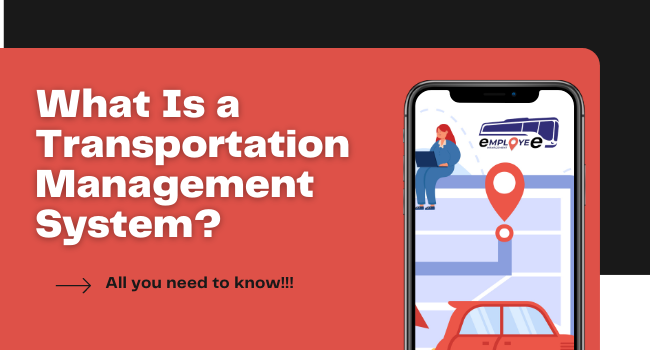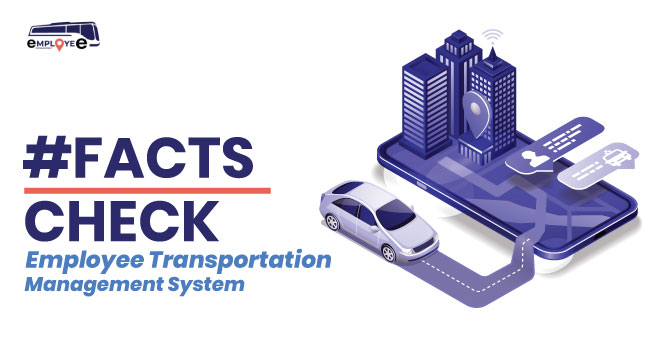A TMS (transport management software) is a logistics software that uses state-of-the-art technology to plan, optimize & execute both incoming & outgoing vehicle movements & making sure its operation is running hassle free.
Transport management system provides transport managers day to day insights of their transport operations. It also effectively streamlines & optimizes the entire transport management process.
What is Transportation Management And Why Is it important?
A transport management system plays an important role in fleet management, affecting every process from life cycle management to logistics. Before the arrival of transport management system almost all fleet management operations were done on paper. Transport managers have to spend hours cross verifying every detail from vehicle maintenance to vehicle tracking.
With the impact of transport management system every internal & external user associated with the organization were able to access, scale & complete tasks efficiently. The modern TMS allows users a quick start up, greater flexibility & minimal usage costs.
Benefits of using a Transport Management Software
- Saves time & money without adding labor costs
- Streamline operations & reduce human errors
- Creates visibility & create customer satisfaction
- Accumulates your tracking data in one place so you can further analyze for future purposes
- Improves your ROI
What Is Transportation Management Software in Logistics
TMS over the last few years have been becoming a common asset to the logistics industry. Based on the efficiency, cost & distance the tracking management system selects the optimum route with the best carrier for the trip.
A state-of-the-art TMS introduces visibility to every stage of the supply chain.
How logistics companies use a TMS
Following are some of the ways how logistics companies use a transport management system
Schedule & Track Drivers: Transport managers can coordinate with the drivers making sure the shipment is moving across the supply chain forthrightly.
Optimize & Plan Routes: With the help of real time tracking transport managers can navigate the drivers to automatically optimize routes with onboard telematics & ensure the most efficient deliveries possible.
Enhance Customer Experience: Customer experience is one of the golden standards in logistics today. With the help of a transport management system, you can keep track of your customer information to analyze & ensure the customer requests are handled accurately.
Lowers Shipping Costs: With a TMS you can keep track of number of metrices on a manageable level. Especially shipping cost like gas prices, tire wear & tear cost and other expenses. TMS can automatically calculate & provide daily, monthly & annual forecasts.
Track Inventory: In every logistic operation inventory management is a hectic task. Especially when products are out of stock & customers take their business elsewhere. In such times a transport management system can serve as a dependable link between the two.
How Can I Choose the Right Transport Management Software?
The primary goal of a TMS is to coordinate & optimize the entire process of planning & delivery goods/personnel from one place to another efficiently & effectively. So, while choosing a Transport management system you should look for one that has AI features & cloud-based functions.
Read Also: “Why do Employees Prefer Automated Transportation?”
A TMS serves as a center of management for transport managers, it also reserves the ability to identify the most effective transport policies based on the most profitable parameters.
The Following Are Some Of The Most Wanted Features In A Transport Management Software
- Route Optimization: Identifies the most efficient route and maps to save time and fuel
- Automated Carrier Selection: This feature ensures the most feasible carrier options for each & every delivery & improves the procurement process.
- Shipment Consolidation: This feature allows you to trim down the cost & secure them as effective sets & maximize the load consolidation
- Integrated Warehouse Management System: This feature allows you to get real time information on the warehouse based on shipment dispatching
- Multi-Modal Transportation Facility: This feature guides your freight using modes other than roads
- Analytics & Business Intelligence: This feature helps transport managers to utilize the warehouse data more proficiently & functionally.
- Product Visibility: Transport managers can get complete visibility over the shipment & products
- Parcel Shipping Support: Customer support is crucial element in logistics, so transport managers can effectively handle the parcel routing &rating through this platform
- Track & Trace: With this feature managers can get the real time information of between carrier, distributor & customer
- Risk Management: This feature allows the automation of reports & audits by maintaining them through other regulatory programs.
What Is the Best Mobile Solution for Transport & Logistics?
Employee Transport Management
ETM is one of the most trusted names in employee transportation providing state of the art TMS solutions. With the arrival of ETM the problems faced by transport providers while commuting employees around the world was reduced in a large scale.
Fleet Management System
With an array of tracking solutions fleet management system aims to satisfy the needs of Schools/Universities, Tour Operators, Corporate transportation, car rental services, on demand vehicle tracking and waste management services. Fleet management system has over 5000+ clients across 30+ countries.
Vehicle Tracking Qatar
Vehicle Tracking Qatar offers customizable GPS vehicle tracking solutions for fleet owners who wishes to manage the day-to-day operations without any hassle. Aimed to deliver custom edge tracking technology across the globe vehicle tracking Qatar simplifies the management of your entire fleet reducing risks while saving resources.
Trimble
Trimble is a full-scale transport management tool delivering end to end transport management tracking from order to delivery. They also have TMW suite which is a top end management tool specifically for fleet management.
Mcleod
One among the leading providers of transport management system and trucking software, Mcloed provides business process automation, document imaging & fleet management.
Tailwind
Tailwind is an all-in-one Transport management system specializing in delivering smooth running of transport operation from administrative operations, accounting & dispatching to customer operations.
Final Thoughts
Any organization involved with shipping or logistics has to implement a transport management software. If you are looking for a futuristic state of the art transport management software then look more
Contact employee transport for best in market Transport management software.





